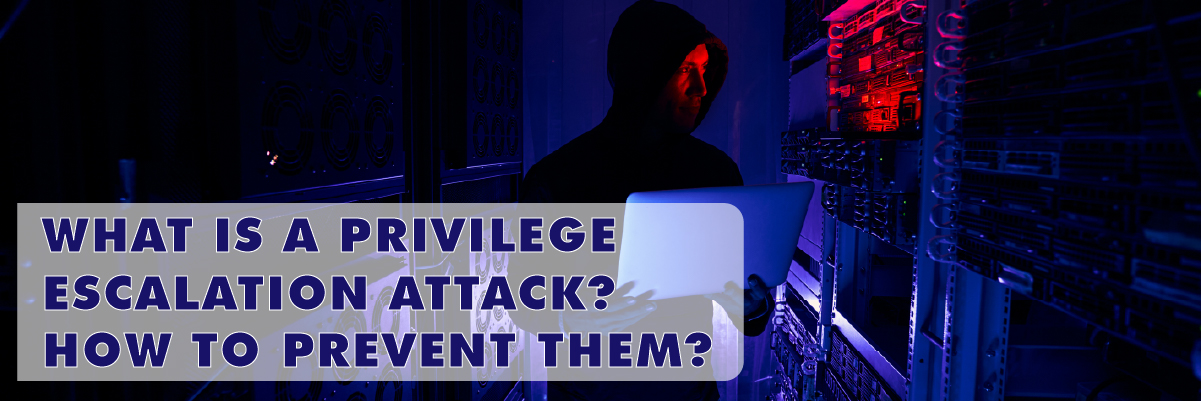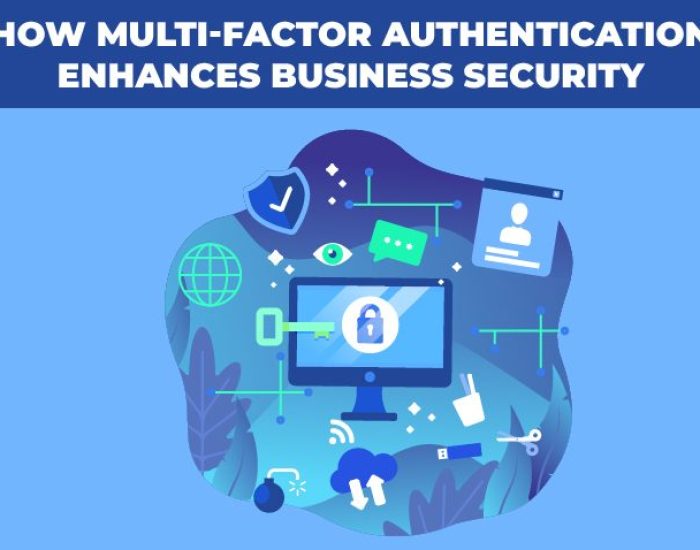What is a Privilege Escalation attack? How to prevent them?
 Privilege escalation is a vulnerability used to access applications, networks, and mission-critical systems. And privilege escalation attacks exploit security vulnerabilities and progressively increase criminal access to computer systems. These attacks are classified into vertical and horizontal privilege escalation based on the attack’s objective and strategy. There are several types of privilege escalation attacks, and each of them exploits a unique set of vulnerabilities having its own set of technical requirements.
Privilege escalation is a vulnerability used to access applications, networks, and mission-critical systems. And privilege escalation attacks exploit security vulnerabilities and progressively increase criminal access to computer systems. These attacks are classified into vertical and horizontal privilege escalation based on the attack’s objective and strategy. There are several types of privilege escalation attacks, and each of them exploits a unique set of vulnerabilities having its own set of technical requirements.
Where there are privileges, there are ways to subvert them. Privilege escalation attacks are methods of gaining access to restricted privileges in system services or programs. This article covers the various types of privilege escalation attacks, the types and impact of these attacks, and how to prevent them and prevent yourself from being exploited.
What is a Privilege Escalation attack?
Privilege escalation is a common method attackers use to gain unauthorized access to systems and networks within a security perimeter. Many organizations face an attack vector due to a loss of focus on permissions. As a result, existing security controls within organizations are often insufficient to prevent attacks. Attackers initiate privilege escalation attacks by detecting the weak points in an organization’s IT infrastructure.
Privilege escalation attacks occur when a malicious actor gains access to a user account, bypasses the authorization channel, and successfully accesses sensitive data. The attacker can use obtained privileges to execute administrative commands, steal confidential data, and cause severe damage to server applications, operation systems, and the company’s reputation. While deploying these attacks, attackers are generally attempting to disrupt business functions by exfiltrating data and creating backdoors.
How Do Privilege Escalation attacks Work?
Privilege escalation attacks represent the layer of a cyberattack chain where criminals take advantage of a vulnerable system to access data from an unauthorized source. However, there are various weak points within a system, but some common entry points include Application Programming Interfaces and Web Application Servers. Attackers authenticate themselves to the system by obtaining credentials or bypassing user accounts to initiate the attack. Apart from it, attackers find different loopholes in account authorization access to sensitive data.
Regrading how a privilege escalation attack works, attackers usually use one of these five methods: credential, system vulnerabilities, and exploits, social engineering, malware, or system misconfigurations. By implementing one of these techniques, malicious actors can gain an entry point into a system. Depending on their goals, they can continue to uplift their privileges by taking control of a root or administrative account.
Common Privilege Escalation Attacks Examples
Here are some common examples of real-world privilege escalation attacks.
- Windows Sticky Keys_ It’s one of the most common examples of privilege escalation attacks for Windows operating systems. This attack requires physical access to the targeted system and the ability to boot from a repair disk.
- Windows system internals_ commands provide a source of privilege escalation attacks in Windows. This method assumes that the attacker has a backdoor from a previous attack, such as Windows sticky keys method. The attacker must have access to local administrative rights and then logs into backdoor accounts to escalate permissions to the system level.
- Android and Metasploit_ Metasploit is a well-known tool, including a library of known exploits. This library contains the privilege escalation attack against rooted android devices. It creates an executable file called superuser binary, allowing attackers to run commands with administrative or root access.
Privilege Escalation attack techniques
 The goal of the privilege escalation attack is to get high-level privileges and find entry points to critical systems. There are various techniques attackers use for privilege escalation. Here are three of the most common ones.
The goal of the privilege escalation attack is to get high-level privileges and find entry points to critical systems. There are various techniques attackers use for privilege escalation. Here are three of the most common ones.
- Bypass user account control_ The user account control is a bridge between users and administrators. It restricts application software to standard permissions until an admin authorizes privilege increase.
- Manipulating access tokens_ In this case, the attacker’s main task is to trap the system into believing that the running processes belong to another user other than the authorized user that started the process.
- Using valid accounts_ Criminals can leverage credential access techniques to get credentials of certain user accounts or streal them using social engineering. Once attackers access the organization’s network, they can use these credentials to bypass access control on IT systems and various resources.
What Are The Types Of Privilege Escalation Attacks?
There are two types of privilege escalation attacks. These include
1. Horizontal privilege escalation
It’s a type of attack in which attackers expand their privileges by taking control of another account and misusing the authorized rights granted to the legitimate user. Phishing campaigns are used to gain access to user accounts. For elevating the permissions, attackers either exploit vulnerabilities in the OS to gain root-level access or leverage hacking tools, such as Metasploit.
2. Vertical privilege escalation
This type of attack occurs when a criminal gains direct access to an account with the intent to perform similar actions as the legit user. A vertical privilege attack is easier to achieve as there is no desire to elevate permissions. In this scenario, the attack focuses on account identification with necessary privileges and gaining access to that account.
Impact of Privilege Escalation Attack
Privilege escalation attacks can impact in the following ways.
- It can enter the organization’s IT infrastructure
- Modify permissions to steal sensitive information
- Add, delete, or modify users
- Create a backdoor for future attacks
- Gain access to systems and files and disrupt the operations
- Crash the website
How to prevent Privilege Escalation attacks?
Here are some best practices to prevent privilege escalation attacks.
- Protect and scan your systems, network, and application. You can use effective vulnerability scanning tools to detect insecure and unpatched operating systems, applications, weak passwords, misconfigurations, etc.
- It’s essential to manage privileged accounts and ensure their security. The security team needs an inventory of all accounts where they exist and their purpose.
- Establish and enforce robust policies to ensure that users and strong and unique passwords. Use multi-factor authentication to add an extra security layer while overcoming vulnerabilities arising due to weak passwords.
- Users are the weakest link in the security chain, putting the entire organization at risk. Businesses should implement robust security awareness programs with effective training.
- Secure databases and sanitize user inputs. Databases are attractive targets of criminals as web applications store all their data in databases, such as login credentials, configuration settings, and user data. With one successful attack, such as SQL injection, criminals can access all sensitive information and leverage it for further attacks.
Conclusion
Privilege escalation attacks are a significant problem. They can easily create havoc, with the attack escalating from one user to the entire system. The most important thing you can do is be aware of the different privilege escalation types and be sure not to give access to anything on your computer or network that you don’t need. For better protection from attacks, seek help from a cybersecurity partner such as Protected Harbor.
The Protected Harbor approach is designed to mitigate the risk of privilege escalation attacks by monitoring and controlling system privileges. Protected Harbor is a leading provider of IT security consulting with over 20 years of experience helping clients protect their critical data from cyberattacks. We specialize in Privilege Escalation Assessment, Vulnerability Assessment, and Penetration Testing services for modern enterprises. By identifying potential risks in your organization before hackers target them, we provide proactive protection against cyber-attacks. Our experts will work with you to identify your needs and develop a customized assessment plan that meets your unique requirements. We’ll also work side-by-side during the assessment to answer any questions you may have and provide guidance on how to make changes or updates in response to our findings.
Protected Harbor is giving a free IT Audit for a limited time. Contact us today to get one.






